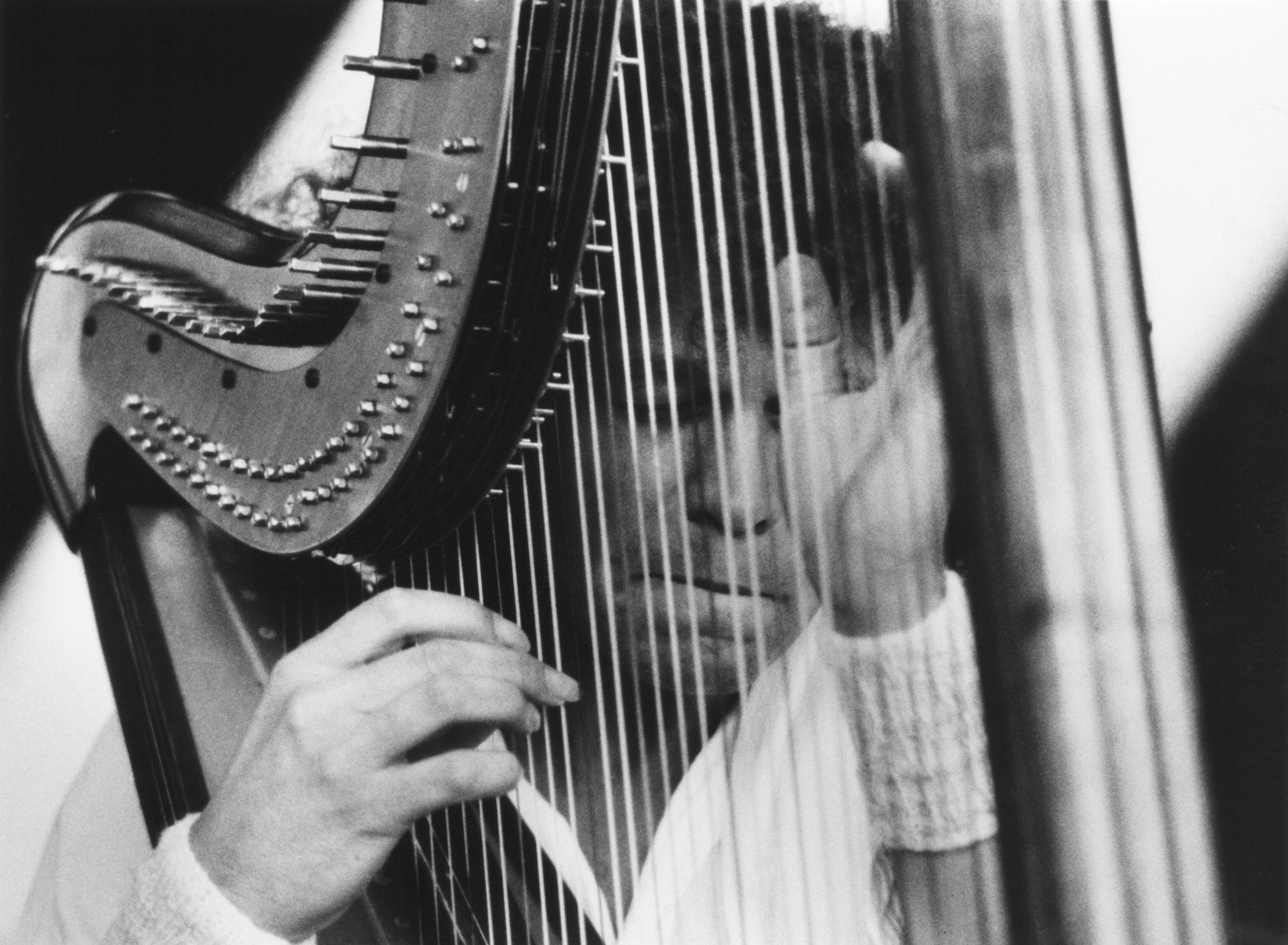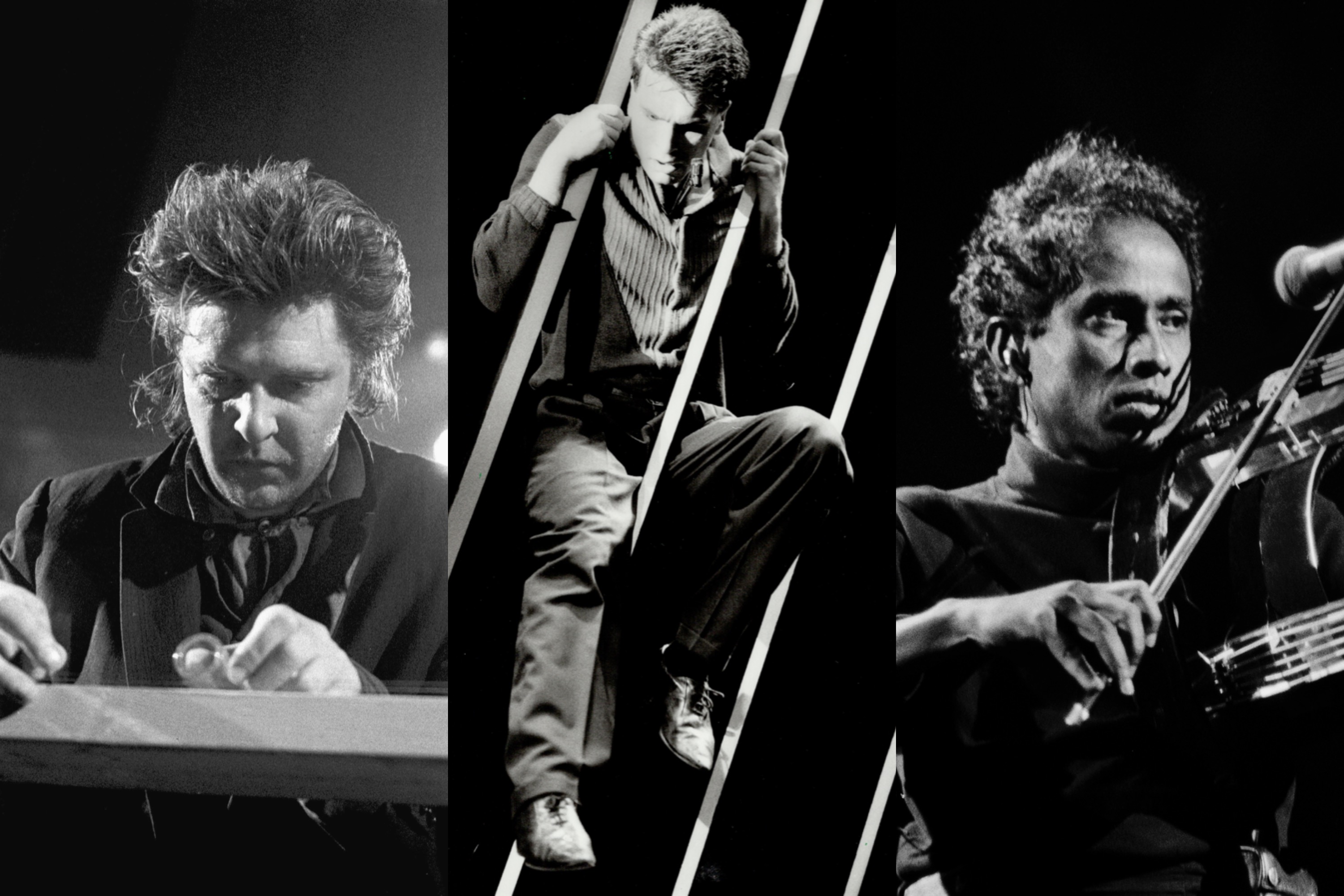This column originally appeared in the October 1985 issue of SPIN.
I don’t see myself as a musician,” confesses Andreas Vollenweider. The 32-year-old Swiss phenomenon, who makes his living playing a modified, electroacoustic harp, has released three albums and an EP in the United States, has sold more than 2 million records, and packs virtually every hall he plays. If he’s no musician, he certainly imitates one like a pro.
Speaking from his home in Zurich, Vollenweider (pronounced Fole’-en-vie-der) continues, “I see myself as being like a painter or a storyteller. I don’t like to see everything reduced to music. What I’m doing could just as easily be a book or film. I’m creating a kind of ‘invisible theater’ in the listener’s mind.”
Vollenweider talks like this quite a bit, but that shouldn’t surprise anyone who’s heard his music. Using harp, piano, percussion from around the world, and vocals, he produces lush, almost symphonic musical tapestries—often inane, occasionally inspired—that simply can’t be pinned down. Neither classical, rock, nor jazz, his gentle mood music never actually goes anywhere and doesn’t really say anything. True to form, getting Vollenweider to come right out and objectify his music is almost impossible. “A lot of it is unconscious, and I’d like to keep it there,” he says.
Vollenweider spent most of the ’70s writing film scores, where his tendency toward soft, peaceful, easygoing music limited him. “I ended up doing only documentaries and nature films,” he recalls. “I wasn’t able to fill the needs for thrillers or other types of films.” He was then also part of a group called Poetry and Music, which recorded three albums of, well, poetry and music. Vollenweider played a variety of brass, string, and keyboard instruments at the time and began experimenting with the zither. That led him to the harp in the late ’70s. Having never studied the instrument formally, he developed his own techniques of plucking the strings and playing rhythmic passages on the harp’s lower strings. Once again, he’s characteristically vague when asked what attracted him to the harp. “I just grew into it. It had something to do with my personal development—it was the best instrument for what I was trying to express.”
Vollenweider also experimented with ways of amplifying the harp’s often fragile tone. He miked each of the harp’s 47 strings individually and used a knee-operated damper to obtain sharper, more percussive bass notes. In 1980, he released his first album of harp music in Europe. Called Eine Art Suite (A Kind of Suite), it sold surprisingly well. In 1981, Vollenweider and his group gave a successful concert at the prestigious Montreux Jazz Festival in Switzerland. A recording contract with CBS followed, and from there, the harpist’s career took off. His first two CBS albums, Behind the Gardens … and Cavern Magica, went gold in Europe and gained him wide popularity in America. His third album, White Winds, also went gold in Europe.
What has made Vollenweider such an unlikely success? “I try to think about what happened,” he muses, “and I have to confess that I’m still surprised. This music is made from the heart for the heart. The heart never asks for explanations.” Uh… right.
The electroacoustic harp is central to Vollenweider’s music, but dozens of other instruments, both electric and acoustic, also appear. The music floats along on soft, shuffling rhythms, creating a smooth surface in which nothing disturbs or seems out of place. Here is where he veers dangerously close to smooth, unobtrusive “elevator music.” Vollenweider strives for lightness and beauty in his works, apparently ignoring other aspects of life or music. “I’m not a dreamer,” he claims; “I have both feet on the ground.” Now, there’s nothing wrong with pretty music, but excluding more dramatic moments seems limiting. “It doesn’t limit me, personally,” Vollenweider maintains. “The need for aggressive music is satisfied by others. It would disturb the creative process of the listener. I like to build a free space for the listener where he or she can be assured there is no enemy.”
Commendable, but unfortunately the absence of the “enemy” often leaves a vacuum that rapidly fills with sappy, lifeless percussion, aimless keyboard wanderings, and dreadful quasi-angelic voices. (Talk about disturbing the creative process!) Vollenweider’s albums bring the difference between “hearing” and “listening” into sharp contrast. This music, though pleasant to hear, isn’t meant for active listening. Vollenweider produces his own recordings, and does so with remarkable skill, lending them a crystalline purity that masks the music’s unruffled sameness. In concert, the image he projects—dressed all in white, eyes closed, strawberry-blond hair so close to the harp it’s a wonder it doesn’t get tangled in the strings—greatly enhances the music’s ethereal quality.
Inevitably, as Vollenweider has become more popular, people have tried to categorize his music. All three of his domestic releases are still on the Billboard jazz charts, but his music can hardly be called jazz. Like the “California jazz” CBS Records tried fobbing off on us in the late ’70s, Vollenweider’s music lacks the energy and dynamic range of true jazz. Many listeners conveniently classify him as a “new-age” musician. New-age music, which also originated in California, is usually meditative and introspective; much of it is designed not to be listened to but to be used for stress reduction, contemplation, and so on. Vollenweider, however, is decidedly unhappy with the “new-age” classification. “It’s a clear sign of hopelessness that we have to categorize everything. When something is new and fresh, we need to name it before we can communicate with it. But I’m not a part of new age, or of anything else.” Vollenweider’s views of music, though, closely resemble those of the new-age movement. “We’ve celebrated materialism for years,” he says, “and neglected the spiritual world and our greatest potential—imagination. I’m consciously working with imagination, to get people to see it and use it.” Like new age, the Swiss harpist’s music is primarily escapist. Yet he insists that his concerns are different. “If two people speak in a low voice, it doesn’t mean they’re talking about the same thing. Today so many people are lost in spirituality; but you need both, the spiritual and the physical. New age needs to be widened, brought back to reality.”
One of the realities of 20th-century life is electronic technology, which Vollenweider openly distrusts though he uses it as an integral part of his music. Maintaining a balance between creativity and mechanical gadgetry, he says, is a difficult task. “Once you’ve had an inspiration, you have to find out which energy or tool—electricity or whatever—will serve it. Then you have to prove that you can use it without its using you. My electricity is under control; that’s why I can sleep at night.”
Vollenweider’s own stimulation comes not so much from other music (“I don’t get to listen to very much, just enough to get some nourishment”) as from the response he gets while on tour. “There’s so much joy and feedback that it’s almost too much. That’s very difficult. For that reason, I have to take a break now and digest what I’ve learned.” His legions of fans can look forward to a fourth album and another tour, most likely next year. Those of us who aren’t converted yet will be waiting to see what Vollenweider does as well. Each of his previous albums has included moments that displayed potential, and he’s undeniably a talented musician and first-rate producer, but can he compose music that sustains interest, even if we’re not imagining fairy-tale landscapes full of pink bunnies and cute, fluffy kitties? Or will his period of digestion simply be followed by excretion? Vollenweider’s career is worth watching. Whether his music will be worth listening to remains to be heard.





